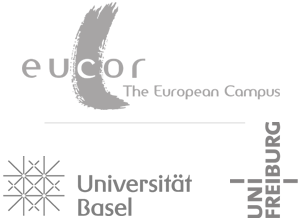Content and Language Integrated Learning (CLIL) in a Swiss context: The role of translanguaging and technicality in biology lessons taught in English (CLIL) and German (non-CLIL)
| Lecturer(s) | Dr. des. Aline Bieri, University of Basel, Switzerland |
| Contact person | Dr. des. Aline Bieri, University of Basel, Switzerland |
| aline.bieri@unibas.ch | |
| Date | Tuesday, 2nd November 2021, 13:00 - 14:00 |
| Location |
Dr. des. Aline Bieri, University of Basel, Switzerland
Content and Language Integrated Learning (CLIL) in a Swiss context: The role of translanguaging and technicality in biology lessons taught in English (CLIL) and German (non-CLIL)
2 Nov. 2021, 13:00-14:00 at Grosser Hörsaal
Over the last two decades, Content and Language Integrated Learning (CLIL) programs, where a content subject is taught in an additional language, have become increasingly popular, and Switzerland is no exception. Due to its multilingual landscape and its decentralized education system, Switzerland offers a particularly diverse context for the study of CLIL, which, compared to other European countries, is not that advanced yet.
In this talk, I present the main findings of my PhD thesis, which investigated the language use of students and teachers in CLIL (English) and non-CLIL (German) biology lessons at a Swiss upper-secondary school (Gymnasium) in an extensive case study. In a self-collected corpus (EG_BIO corpus) consisting of 31 video-recorded CLIL and non-CLIL biology lessons, two particularly relevant aspects were analyzed using a mixed-methods approach: the use of multilingual and -modal resources (translanguaging) and the role of technical terms (technicality) in the classroom, as well as their interplay in terms of how multilingual and -modal resources are used to negotiate technical terms.
Findings show that translanguaging practices and technical terms are used in complex and diverse ways in CLIL and non-CLIL biology lessons. Translanguaging practices are more frequent in CLIL than in non-CLIL lessons, but with less than 1% of the EG_BIO they are rare in both contexts. Technical vocabulary makes up roughly a tenth of the classroom discourse and a quarter of the teaching materials, which means there is a big discrepancy in lexical density between the two modes that the teacher has to navigate. Furthermore, translanguaging with source languages, a strategy used by one of the teachers to negotiate subject-specific terminology, seems to be a potentially successful pedagogy in science teaching, even more so in CLIL science lessons. Overall, the process-oriented comparative study demonstrates how language and content are closely intertwined at the level of translanguaging and technicality, and thus contributes to further our understanding of how language and content work in integration in CLIL and non-CLIL biology lessons in a particular Swiss context.
For all further questions, please contact Aline Bieri directly.
